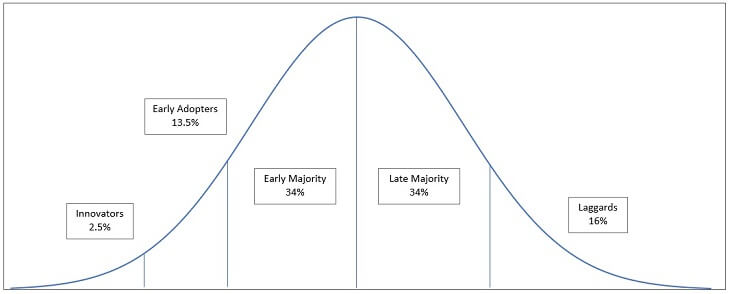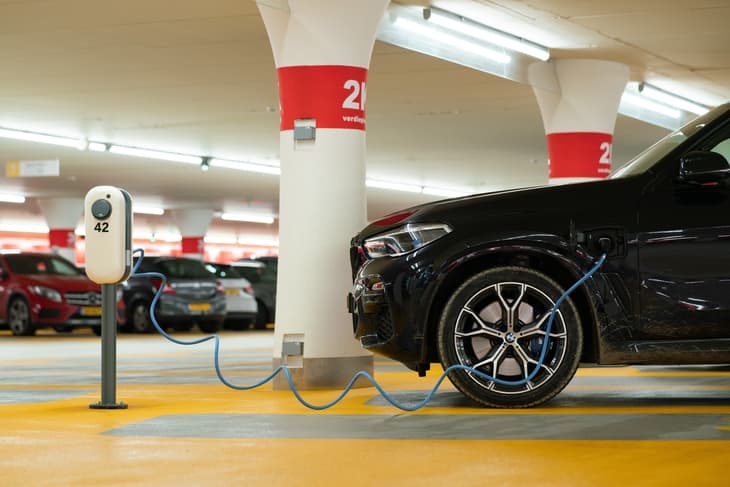At Aronson Advertising, we do a lot of market research. We’re always looking at developing trends and ways to improve results for our clients. And arguably the biggest trend in the auto industry right now is, of course, the focus on electric vehicles, or EVs. Right now EVs comprise some two percent of U.S. auto sales, but manufacturers and industry experts forecast* that EVs may comprise anywhere from twenty to fifty percent of auto sales within just ten years. We discussed this transition in a recent blog post.
As the industry goes through this period of upheaval, it will be vital for manufacturers and dealers to capture the business switching over to EV. So what’s the best way to do this? Marketing EVs isn’t simply business as usual. During a transition period like the one we are in, steps must be taken to address the innovative nature of EVs in our marketing. It’s still vital to differentiate cars based on traditional metrics like features, price, reliability, and safety. But capturing more of a market that’s so rapidly changing will require a new approach, one that includes educating consumers so that they are comfortable making an informed decision on a new technology.
Diffusion of Innovation Theory
When it comes to adopting something new and innovative, like EVs, we’re given a model in Diffusion of Innovation Theory. This posits that the population can be divided into five categories:
- Innovators
- Early Adopters
- Early Majority
- Late Majority
- Laggards
This is basically just dividing up a normal distribution pattern, or bell curve. The question is, how do we take advantage of the increasing market for EVs? How do we accelerate this process and turn skeptics into customers?

Persuading People to Join the Vanguard
The stages by which a person adopts an innovation are awareness; decision to adopt; initial use; and continued use. While consumers you encounter may be at different stages of awareness and knowledge, Pew Research found that 39 percent of people would seriously consider an EV for their next auto purchase, suggesting that they are at the decision stage. This stage is influenced by these factors:
- Relative Advantage — the degree to which an innovation is perceived as an improvement over the status quo
- Compatibility — how closely an innovation aligns with the potential adopter’s values and needs
- Complexity — assessing how difficult it is to understand and use the innovation
- Trialability — the degree to which an innovation can be tested and assessed
- Observability — measuring the tangible results of an innovation
When marketing EVs, it is helpful to consider these factors. Explaining clearly the benefits of EVs communicates their relative advantage, while employing solid data about factors like range and cost savings addresses trialability. And as with any new technology, it’s important to demystify the EV and explain its design clearly to satisfy concerns about complexity.
Putting EV Marketing into Practice
Diffusion of innovation and the stages of innovation adoption may be interesting in theory, but how do we turn these into useful marketing practices? There are a few areas on which we need to focus.
Ready, Aim
Address the compatibility factor by knowing your customer, as with any car. It’s obvious that the Nissan Leaf and GMC Hummer should be marketed in different ways to different people, but there are additional layers when developing marketing personas for EVs. Consultant firm Oliver Wyman placed these personas on a grid based on their sources of information and attitude toward EVs in general. When developing marketing personas for a new EV, it will be vital to incorporate people’s attitudes toward EVs along with other factors.
Accentuate the Positive
It’s a good idea to pull people in using some of the unique relative advantages of EVs. Using firm data about fuel cost savings helps sell the EV and establish a sense of trust. Emphasizing capabilities or technology not found in current gas vehicles, whether it’s the side crawl of the Hummer or home backup power of the F-150 Lightning, helps make EVs stand out. And many car makers, notably GM with its Everybody In campaign, are emphasizing the positive environmental aspects of going zero-emissions.
Address Concerns
To address the complexity factor, be upfront about common worries with EVs. Range is a top concern, so it is beneficial to address this. For a person traveling to a neighboring state, touting a robust network of public chargers may help, or it may make sense to focus on how an EV makes sense for the buyer’s daily medium-distance commute. Reliability is a common worry too: a recent Consumer Reports article made headlines for low EV reliability, although a close read revealed that most reliability issues had little to do with the EV technology. Be clear when explaining the simplicity and reliability of an EV drivetrain. Brand loyalty, and a track record of quality and service support, can also help assuage concerns people may have.
EV Competition
As with gas cars, it’s vital to differentiate your EV from direct competitors — in this case, from competing electric vehicles and not just from gas-powered competition. Unique features, especially with upmarket EVs, make for great selling points just as they do for gas vehicles. Use awards for quality or reliability, impressive range figures, and unique styling to set your vehicle apart from the rest of the rapidly growing EV pack.
Hybrids and Plug-In Hybrids as Gateways
Most manufacturers are building an increasing number of hybrid and plug-in hybrid electric vehicles already, and directing customers towards these can be an effective way to make the EV concept more palatable for the hesitant buyer. Once a person has become comfortable with a far lower gas bill, and satisfied that their electric powertrain works just fine, they may opt for an EV from that same builder on their next purchase.

It’s Time to Get to Work
Now that we have a better grasp on how best to market EVs, we’re ready to get to work. Dealer inventories will feature an increasing number of EVs in coming years, and at Aronson Advertising, we’re determined to help match those vehicles with buyers. Contact us online or give us a call at (847) 297-1700 to see how we can help you meet your goals.
*ClimateWire; Chicago Sun-Times; Reuters; Markets and Markets
